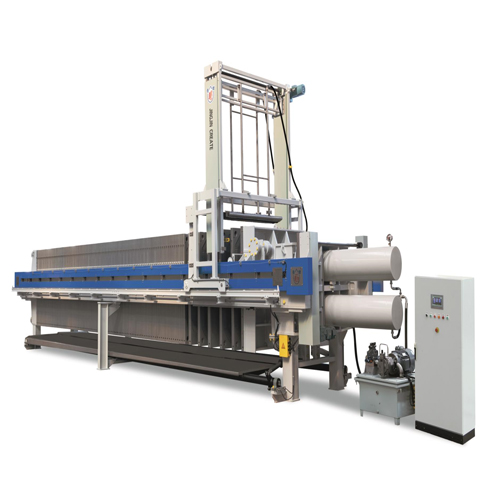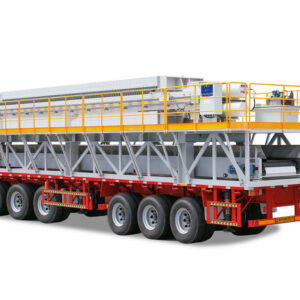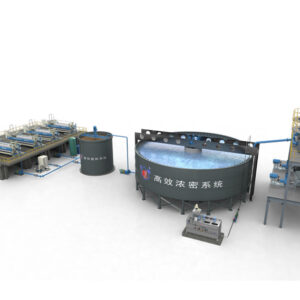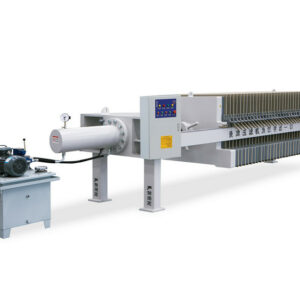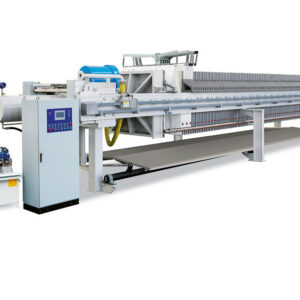screw sludge dewatering machine
- The material of the Jingjin frame is Q345B, which tensile strength is 1.4 times Q235, which makes our machine can be operated more safe and stable.
- The oil cylinder seat, pressing plate, and thrust plate are formed by carbon dioxide protection welding.
- The main beam of the Jingjin filter press is designed by adopting welded box construction and manufactured by making use of submerged arc auto welding technology.
- All the spare parts that need to be painted are dealt with high-speed centrifugal ball blast descaling and iron scale.
Product Description
Jingjin screw sludge dewatering machine
A screw sludge dewatering machine, also known as a screw press or a screw dehydrator, is a specialized equipment used for the dewatering of sludge or slurry in various industries, particularly in wastewater treatment plants. It utilizes the principle of dewatering through pressure and mechanical action to remove moisture from the sludge, resulting in a reduced volume of solid waste.
Screw sludge dewatering machines have become popular in wastewater treatment plants and other industries due to their efficiency, versatility, and cost-effectiveness. They offer an effective solution for reducing sludge volume and achieving solid-liquid separation, contributing to the sustainable management of sludge and wastewater treatment processes.
key features of screw sludge dewatering machine
- Screw Design: The heart of the machine is the screw mechanism that rotates within a cylindrical screen. The screw’s design, pitch, and diameter influence the dewatering process by gradually moving the sludge through the machine.
- Multiple Dewatering Zones: Many screw dewatering machines are equipped with multiple dewatering zones along the screw’s length. These zones apply increasing pressure to the sludge, aiding in the progressive dewatering process.
- Screen or Filter: The cylindrical screen surrounding the screw plays a crucial role in separating water from sludge. The screen allows water to pass through while retaining solid particles, forming a sludge cake.
- Flocculation and Chemical Conditioning: Prior to entering the screw press, sludge is often conditioned with chemicals or polymers that help agglomerate particles, improving dewatering efficiency.
- Variable Screw Speed: Some machines offer the flexibility to adjust the screw’s rotational speed. This control over the speed can impact the dewatering performance and cake dryness.
- Cake Discharge Mechanism: As the dewatered sludge progresses along the screw, it compacts and forms a cake. A discharge mechanism at the end of the machine releases the dewatered cake for further processing or disposal.
Why you will choose our products?
- Robust Construction: The Jingjin screw sludge dewatering machine is built with durable materials and precision engineering, ensuring long-lasting performance even in demanding operating conditions. The sturdy construction minimizes maintenance requirements and downtime.
- Efficient Dewatering: The machine utilizes an advanced screw press mechanism to effectively dewater sludge. The screw applies pressure to the sludge, gradually squeezing out the water through the screen or filter. This results in a significant reduction in sludge moisture content and volume.
- High Dewatering Capacity: The Jingjin screw sludge dewatering machine is designed to handle large volumes of sludge efficiently. It can process a continuous feed of sludge, providing high dewatering capacity and ensuring uninterrupted operation.
- Versatility: The machine is suitable for various types of sludge, including wastewater treatment sludge, industrial sludge, and biological sludge. It can handle sludge with different moisture levels and characteristics, making it versatile for a wide range of applications.
- Automatic Operation: Jingjin screw sludge dewatering machines are equipped with advanced automation and control systems. These systems enable easy operation, parameter monitoring, and adjustment of settings for optimal dewatering performance. Automated operation enhances efficiency and reduces the need for manual intervention.


